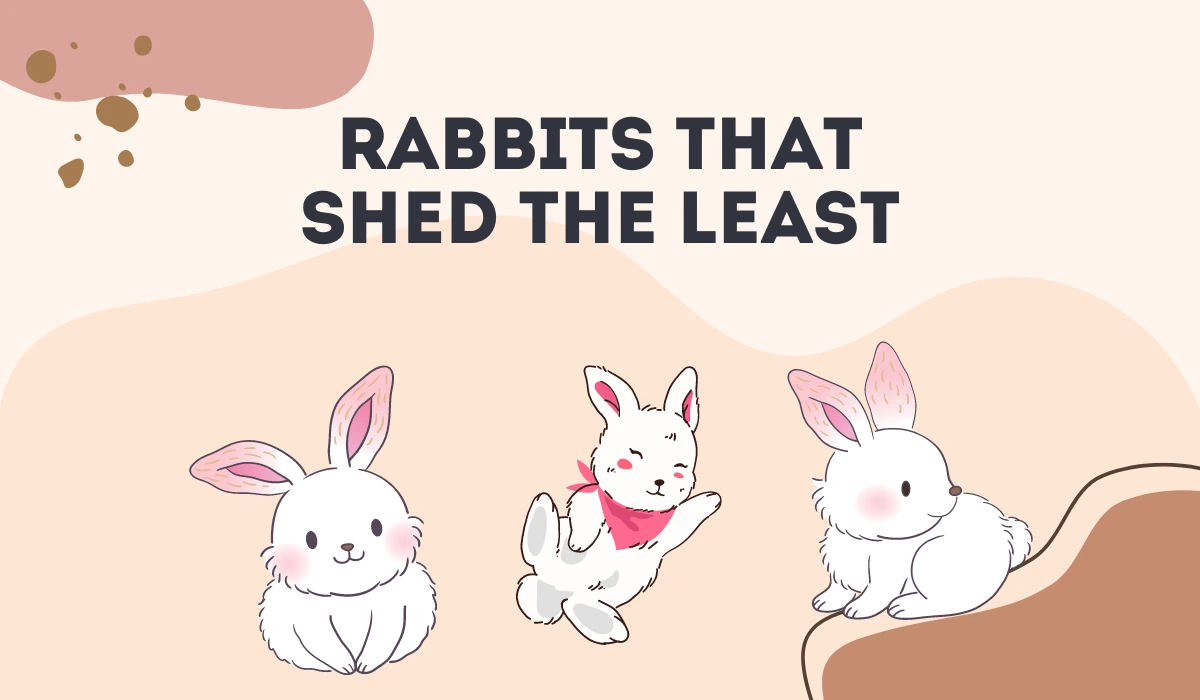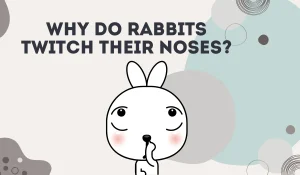Rabbits are one of the most popular pets around the world. They are cute, cuddly, and make great companions. However, one of the biggest concerns of rabbit owners is shedding. Rabbits can shed a lot, leaving their fur all over the house. That’s why many people look for breeds of rabbits that shed the least.
There are several breeds of rabbits that are known for shedding less than others. The Angora rabbit is one of the most popular breeds for this reason. They have long, luxurious fur that sheds very little due to the breeding of this particular rabbit. The Mini Rex is another breed that sheds less than others. However, it is important to note that shedding in rabbits is dependent on a lot of other conditions such as genes, weather fluctuations, and diet.
For those who are looking for a rabbit that sheds the least, it is important to do research and find a breed that fits their lifestyle. Some rabbits require more grooming than others, and some may be more prone to shedding during certain times of the year. By finding the right breed and taking proper care of their rabbit, owners can enjoy the company of their furry friend without worrying about excessive shedding.
Breeds of Rabbits that Shed the Least
Rabbits are adorable creatures that make great pets. However, one downside of owning a rabbit is the amount of fur they shed. If you’re looking for a low-shedding rabbit breed, there are several options to consider. Here are some of the breeds of rabbits that shed the least:
Mini Rex
The Mini Rex is a small breed of rabbit that is known for its short, velvety fur. This breed sheds very little, making it a great option for those who want a low-maintenance pet. Mini Rex rabbits are also very friendly and make great companions.
Havana
The Havana rabbit is a medium-sized breed that has a shiny, short coat. This breed also sheds very little, making it a good choice for those who want a low-shedding pet. Havana rabbits are known for their sweet and gentle personalities, and they make great pets for families.
Dutch
The Dutch rabbit is a small breed that has a distinctive coat pattern of white and another color. This breed sheds very little and requires minimal grooming. Dutch rabbits are also very social and enjoy interacting with their owners.
Satin
The Satin rabbit is a medium-sized breed that has a shiny, satin-like coat. This breed sheds very little and requires minimal grooming. Satin rabbits are also very friendly and make great pets for families.
These breeds of rabbits are great options for those who want a low-shedding pet. However, it’s important to remember that all rabbits shed to some extent, and factors such as diet, environment, and genetics can also affect shedding. Regular grooming and a healthy diet can help minimize shedding and keep your rabbit healthy and happy.
Grooming Tips for Low-Shedding Rabbits
Low-shedding rabbits require less grooming than their high-shedding counterparts, but proper grooming is still important for their overall health and well-being. Here are some tips for grooming low-shedding rabbits:
Brushing Techniques
Brushing your rabbit regularly is an essential part of grooming. It helps to remove loose hair, dirt, and debris from the coat, preventing matting and hairballs. For low-shedding rabbits, a soft-bristled brush or a grooming glove can be used. Brushing should be done gently, in the direction of hair growth, and extra care should be taken around sensitive areas like the belly and ears.
It is recommended to brush your rabbit at least once a week, but during shedding season, which usually occurs every three months, daily brushing may be necessary.
Bathing and Drying
Low-shedding rabbits generally do not require frequent bathing as they are naturally clean animals. However, if your rabbit gets into something dirty or smelly, a bath may be necessary. Use a mild, rabbit-safe shampoo and warm water to bathe your rabbit. Avoid getting water in their ears and eyes.
After bathing, towel-dry your rabbit and use a hairdryer on a low setting to dry their fur, if necessary. Make sure the hairdryer is not too hot as it can burn your rabbit’s skin.
Nail Trimming
Trimming your rabbit’s nails is also an important part of grooming. Overgrown nails can cause discomfort and even health problems for your rabbit. Use a guillotine-type nail clipper, the type made for cats and birds, to clip your rabbit’s nails. Be careful not to cut the quick, which is the pink part of the nail that contains blood vessels and nerves.
It is recommended to trim your rabbit’s nails every 4-6 weeks, but it may need to be done more frequently if your rabbit’s nails grow quickly.
Dietary Considerations for Low-Shedding Rabbits
Rabbits are beloved pets that make great companions. However, their shedding can be a concern for some owners. Fortunately, there are dietary considerations that can help minimize shedding in rabbits. A balanced diet is essential for a rabbit’s overall health and well-being, and it can also help reduce shedding.
Hay and Grasses
Hay is an essential part of a rabbit’s diet. It not only provides necessary fiber for digestive health, but it can also help reduce shedding. Timothy hay is a popular choice for rabbits, as it is low in calories and high in fiber. Other types of grass hay, such as orchard grass or brome, can also be fed in moderation.
In addition to hay, fresh grass can also be offered to rabbits. However, it is important to ensure that the grass has not been treated with pesticides or other chemicals.
Fresh Vegetables and Fruits
Fresh vegetables and fruits should also be a part of a rabbit’s diet, as they provide essential vitamins and minerals. However, it is important to introduce new foods gradually to avoid digestive upset. Some low-shedding options include:
- Leafy greens such as kale, spinach, and lettuce
- Carrots
- Cucumber
- Zucchini
Pellets and Supplements
Pellets can be a convenient way to ensure that a rabbit is receiving all the necessary nutrients. However, it is important to choose a high-quality pellet that is low in fat and sugar. Overfeeding pellets can lead to obesity and other health problems, including shedding.
In addition to pellets, supplements such as vitamin C can be beneficial for rabbits. However, it is important to consult with a veterinarian before adding any supplements to a rabbit’s diet.
Living Environment for Low-Shedding Rabbits
Rabbits are adorable creatures that make great pets. However, their shedding can be a problem for some owners. If you’re looking for a low-shedding rabbit, there are a few things you can do to create a living environment that will help minimize shedding.
Cage Size and Setup
The first thing to consider is the size and setup of your rabbit’s cage. A larger cage will give your rabbit more space to move around and exercise, which can help reduce shedding. According to the House Rabbit Society, a rabbit’s cage should be at least four times the size of the rabbit. For example, if you have a rabbit that weighs 5 pounds, the cage should be at least 20 square feet.
It’s also important to provide your rabbit with a comfortable and safe living space. The cage should have a solid floor to prevent injuries, and it should be easy to clean. You can also add a few toys and a hiding place to keep your rabbit entertained and happy.
Bedding and Litter Options
The type of bedding and litter you use can also affect how much your rabbit sheds. Some materials, such as straw and hay, can cause more shedding than others. Consider using paper-based bedding or recycled paper pellets instead. These options are dust-free and absorbent, which can help reduce shedding.
It’s also important to clean your rabbit’s cage regularly. This will help prevent the buildup of hair and dander, which can contribute to shedding. You should clean the cage at least once a week, and more often if you have a particularly messy rabbit.
Temperature and Humidity Control
Rabbits are sensitive to temperature and humidity changes, which can cause them to shed more. Keep your rabbit’s living space at a consistent temperature between 60 and 70 degrees Fahrenheit. You can also use a humidifier to maintain a humidity level of around 40 to 60 percent. This will help keep your rabbit’s skin and coat healthy, which can reduce shedding.
In conclusion, creating a living environment that is comfortable, safe, and clean can help reduce shedding in rabbits. By providing your rabbit with a large cage, using the right bedding and litter, and controlling the temperature and humidity, you can enjoy the company of your low-shedding rabbit for years to come.
Conclusion
After researching the topic of rabbits that shed the least, it is clear that the Angora rabbit is the most commonly cited breed for shedding the least. This is due to the fact that the Angora rabbit has been bred specifically for its long and robust fur, which sheds very little.
Other breeds that are often mentioned for shedding less include the Mini Rex rabbit and the Turkish breed. However, it is important to note that shedding can be influenced by a variety of factors, such as genetics, weather conditions, and diet.
It is also important to remember that while some breeds may shed less than others, all rabbits will go through a natural shedding process. This shedding is necessary for rabbits to maintain healthy coats and regulate their body temperature.
If someone is looking for a rabbit that sheds the least, they should consider the Angora breed or other breeds that are known for shedding less. However, they should also be prepared for some shedding to occur and be willing to provide proper grooming and care to their rabbit to ensure a healthy coat.
FAQ
Do all rabbits shed?
Yes, all rabbits shed their fur to some extent. Like many other animals, rabbits shed their fur in response to changes in temperature and daylight hours. They also shed their fur as a natural part of their growth cycle, as new fur replaces old, damaged fur.
What is the best rabbit to keep indoors?
Some popular indoor rabbit breeds include:
– Holland Lop: A small, compact breed with a gentle and social personality.
– Mini Rex: A medium-sized breed with a soft, velvety coat and a playful, curious nature.
– Lionhead: A small, fluffy breed with a sweet and gentle disposition.
– Netherland Dwarf: A tiny breed with a big personality, known for being playful and affectionate.
– English Lop: A larger breed with long, floppy ears and a calm, friendly temperament.
What is the laziest bunny breed?
Some of the breeds that are commonly referred to as being among the “laziest” include:
– French Lop: A large, heavy breed with a calm and docile temperament.
– Flemish Giant: Another large breed with a gentle and easygoing personality.
– Mini Lop: A small breed with a relaxed and friendly disposition.
– Jersey Wooly: A small, fluffy breed known for being laid-back and easy to handle.
– English Spot: A medium-sized breed with a calm and friendly personality.



